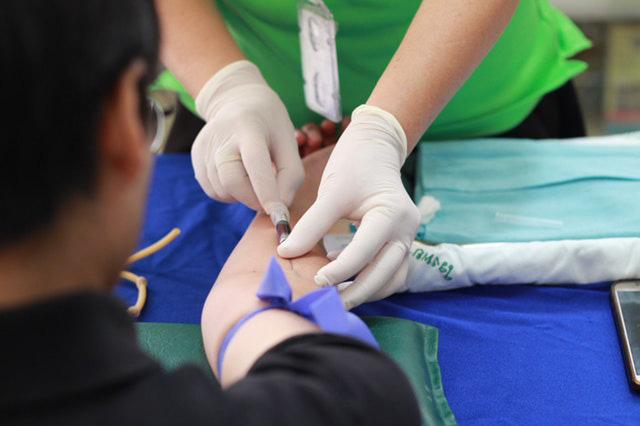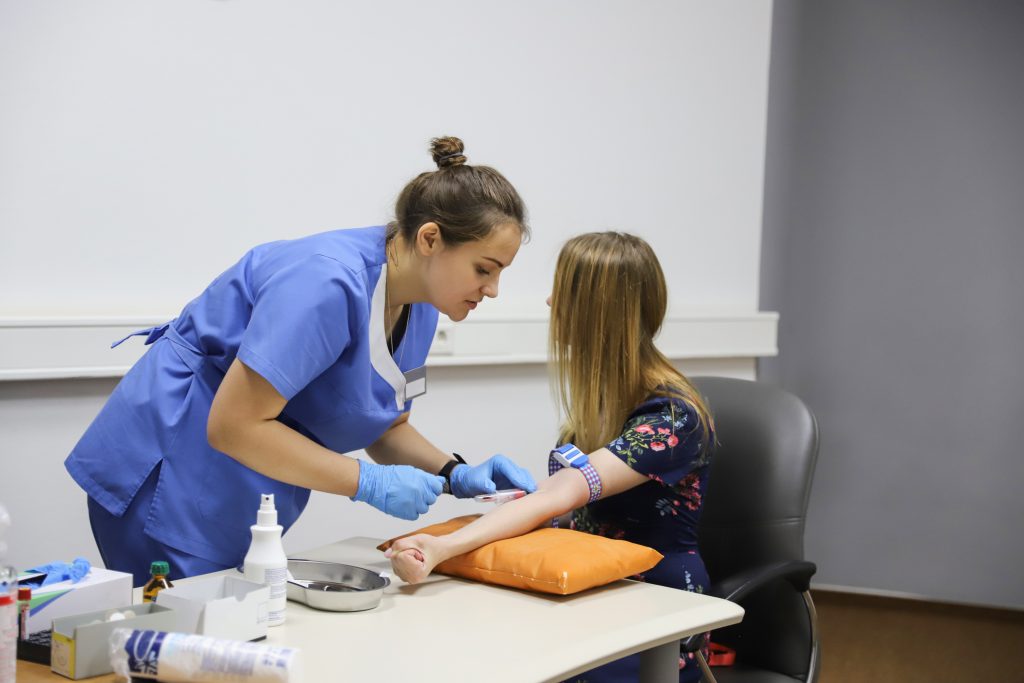The Greatest Guide To Northeast Medical Institute - New Haven Campus Phlebotomy Course & Cna Class
The Greatest Guide To Northeast Medical Institute - New Haven Campus Phlebotomy Course & Cna Class
Blog Article
Northeast Medical Institute - New Haven Campus Phlebotomy Course & Cna Class Things To Know Before You Buy
Table of ContentsGet This Report on Northeast Medical Institute - New Haven Campus Phlebotomy Course & Cna ClassEverything about Northeast Medical Institute - New Haven Campus Phlebotomy Course & Cna ClassThe Best Guide To Northeast Medical Institute - New Haven Campus Phlebotomy Course & Cna ClassAll About Northeast Medical Institute - New Haven Campus Phlebotomy Course & Cna ClassGetting My Northeast Medical Institute - New Haven Campus Phlebotomy Course & Cna Class To WorkNortheast Medical Institute - New Haven Campus Phlebotomy Course & Cna Class - Questions
Nevertheless, making use of such tools must be accompanied by other infection avoidance and control practices, and training in their use. Not all safety and security devices are appropriate to phlebotomy. Prior to choosing a safety-engineered gadget, individuals ought to completely explore available tools to establish their ideal use, compatibility with existing phlebotomy techniques, and effectiveness in securing personnel and clients (12, 33).For settings with low resources, cost is a driving consider purchase of safety-engineered devices - Phlebotomy Training. Where safety-engineered gadgets are not available, knowledgeable usage of a needle and syringe is acceptable. Unexpected direct exposure and details details regarding an occurrence need to be recorded in a register. Support solutions must be advertised for those who go through unexpected exposure.
Among the important markers of quality of care in phlebotomy is the involvement and collaboration of the client; this is mutually useful to both the health and wellness employee and the person. Clear details either composed or spoken need to be readily available to every patient that undertakes phlebotomy. Annex F offers sample text for discussing the blood-sampling treatment to a patient. In the blood-sampling room for an outpatient department or center, give a comfortable reclining sofa with an arm remainder.
Excitement About Northeast Medical Institute - New Haven Campus Phlebotomy Course & Cna Class
Ensure that the signs for blood sampling are plainly specified, either in a created protocol or in recorded instructions (e.g. in a lab kind). At all times, comply with the approaches for infection prevention and control listed in Table 2.2. Infection prevention and control methods. Gather all the tools required for the procedure and area it within safe and simple reach on a tray or trolley, making sure that all the items are plainly noticeable.
Where the patient is grown-up and conscious, comply with the steps described below. Introduce yourself to the patient, and ask the patient to mention their complete name. Examine that the laboratory form matches the client's identity (i.e. match the person's details with the lab form, to make certain exact identification). Ask whether the patent has allergies, fears or has actually ever before collapsed throughout previous shots or blood draws.
Make the person comfortable in a supine position (if possible). Area a tidy paper or towel under the individual's arm. Talk about the test to be executed (see Annex F) and acquire verbal approval. The person has a right to refuse a test at any time prior to the blood sampling, so it is essential to ensure that the individual has understood the treatment.
Little Known Facts About Northeast Medical Institute - New Haven Campus Phlebotomy Course & Cna Class.
Prolong the patient's arm and evaluate the antecubital fossa or lower arm. Find a blood vessel of a great size that is visible, straight and clear.
DO NOT place the needle where blood vessels are drawing away, since this increases the opportunity of a haematoma. Finding the capillary will assist in identifying the right size of needle.
Haemolysis, contamination and existence of intravenous fluid and medicine can all change the outcomes (39. Nursing staff and doctors may access main venous lines for specimens complying with procedures. Nevertheless, samplings from central lines lug a risk of contamination or incorrect lab examination outcomes (https://pxhere.com/en/photographer/4295682). It serves, yet not perfect, to injure samplings when first introducing an in-dwelling venous device, prior to linking the cannula to the intravenous fluids.
Northeast Medical Institute - New Haven Campus Phlebotomy Course & Cna Class Can Be Fun For Everyone
Failing to allow enough call time boosts the danger of contamination. DO NOT touch the cleansed site; in specific, DO NOT position a finger over the vein to lead the shaft of the subjected needle.
Ask the client to develop a hand so the capillaries are more famous. Get in the blood vessel quickly at a 30 level angle or much less, and remain to introduce the needle along the blood vessel at the easiest angle of entrance - PCT Training. Once adequate blood has been accumulated, launch the tourniquet prior to taking out the needle
A Biased View of Northeast Medical Institute - New Haven Campus Phlebotomy Course & Cna Class
Withdraw the needle delicately and apply mild stress to the site with a clean gauze or completely dry cotton-wool ball. Ask the person to hold the gauze or cotton woollen in area, with the arm extended and elevated. Ask the patient NOT to bend the arm, due to the fact that doing so creates a haematoma.

Indicators on Northeast Medical Institute - New Haven Campus Phlebotomy Course & Cna Class You Should Know
Do not press the syringe plunger since additional stress increases the threat of haemolysis. Where feasible, maintain the tubes in a rack and relocate the rack towards article source you. Infuse downwards right into the suitable coloured stopper. DO NOT get rid of the stopper due to the fact that it will launch the vacuum. If the sample tube does not have a rubber stopper, inject extremely gradually right into the tube as lessening the stress and speed used to move the specimen minimizes the risk of haemolysis.

Report this page